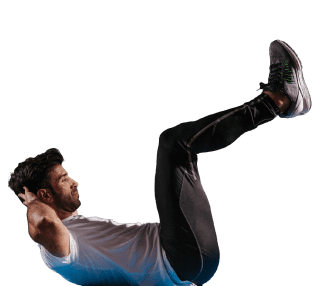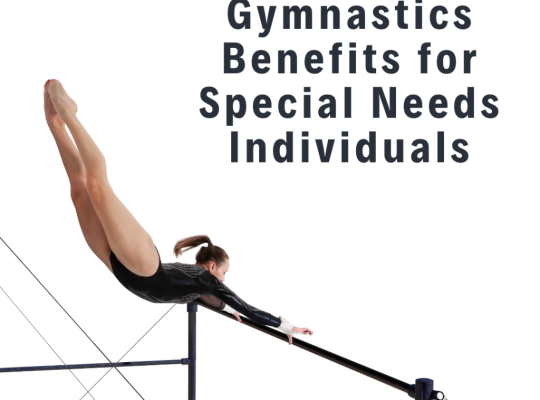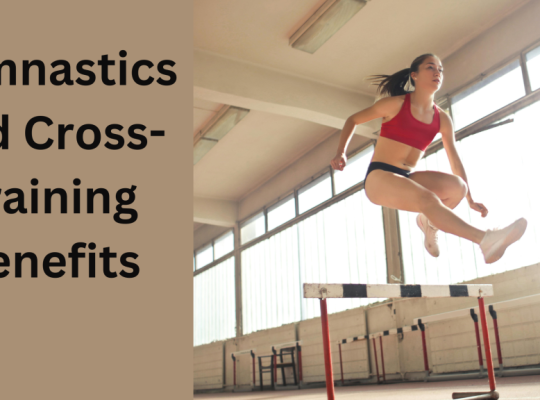Gymnastics: A Delicate Balance of Grace and Risk
Gymnastics is truly mesmerizing, showcasing athleticism, elegance, and unwavering determination. As gymnasts challenge the limits of their capabilities with routines that seem to defy gravity, they also face a notable risk of injury. The intense impact of tumbling runs and the strain on joints during dismounts highlight the demands this sport places on the body.
Nevertheless, athletes can considerably reduce their risk of missing time due to injury by putting into practice injury-prevention techniques designed specifically for gymnastics. This allows them to pursue a rewarding career in this thrilling sport.
Essential Training Methods; Safeguarding Athletes
Establishing a foundation through training methods forms the basis for injury prevention in gymnastics. Key aspects include;
Warm-up and Cool-down Procedures
It is crucial to ensure safety during training sessions Warm-up and cool-down routines are vital. A dynamic warm-up involving exercises followed by static stretches focusing on key muscle groups such, as the hamstrings, quadriceps, shoulders, and back helps enhance blood circulation, raise body temperature, and minimize the risk of muscle strains and tears.
After a workout, it’s beneficial to include a downtime routine involving stretches to help the muscles relax and recover. This can prevent tightness. Lower the chances of experiencing delayed onset muscle soreness (DOMS).
In gymnastics, having a core, upper and lower body muscles, and great flexibility are essential. Core strength offers stability and power for all movements while strong arm, leg, and back muscles assist in performing skills with precision and control.
Engaging in strength training exercises such, as planks, bridges, squats, and resistance bandwork helps in building muscle mass, enhancing bone density, and decreasing the risk of overuse injuries. Flexibility exercises targeting areas like the hamstrings, shoulders, and hips aid in achieving a range of motion while reducing the likelihood of muscle strains or tears.
When learning gymnastics skills, it’s crucial to progress. Coaches should ensure that athletes have mastered skills before moving on to advanced maneuvers. Emphasizing form, at each stage is key, as technical mistakes can lead to injuries.
Coaches play a role by providing spotting techniques, constructive feedback, and creating a learning environment. Rushing through skill progressions can heighten the risk of falls, awkward landings, and serious injuries.
Before starting your workout, make sure to do a warm-up and cool-down. Incorporate stretching along with stretching to improve flexibility. Focus on strength training, for core stability. Remember to progress in your skills and always maintain form. Get guidance from a coach whenever needed.
Rest and Recovery: Giving Your Body a Chance to Thrive
Ensuring training along, with rest and recovery plays a crucial role in preventing injuries among gymnasts. Here’s why it matters;
Scheduled Breaks
Muscles require time to heal and regenerate after workout sessions. Incorporating rest days into the training schedule allows the body to recuperate, reducing the risk of overuse injuries. Taking a day or two off from training each week over the weekend facilitates recovery. Strengthens the body.
Quality Sleep
Sleep is essential for muscle repair, hormone balance, and mental wellness. Gymnasts need ample sleep (around 8 to 12 hours per night) to recover from workouts and enhance their performance. Inadequate sleep can result in fatigue compromised coordination and a higher likelihood of injuries.
Managing Pain
Disregarding pain can have consequences in gymnastics. Athletes must tune into their bodies. Communicate any discomfort to their coaches. If pain persists, seeking advice is imperative. Ignoring pain could worsen existing injuries. Lead to severe problems that might sideline athletes for an extended period.
Nutrition and Hydration
A well-rounded diet packed with nutrients such, as protein, carbohydrates, healthy fats, vitamins, and minerals fuels the body’s recovery process.
Staying properly hydrated is essential for keeping muscles working well and reducing the chances of feeling tired or getting injured. For gymnasts, it’s important to drink water throughout the day and during training sessions to keep their bodies hydrated.
Some key factors to consider include taking rest days and focusing on muscle recovery getting sleep preventing injuries, managing pain maintaining a diet staying hydrated promoting recovery, and avoiding overtraining.
Tailored Programs for Preventing Injuries
Related article: Gymnastics and Cross-Training Benefits
In addition to following training guidelines, specific injury prevention programs can further improve gymnastssafety. These programs may involve;
1. Balance and Coordination Training
Gymnastics heavily rely on body awareness and balance exercises such as single leg squats wobble board training and stability ball routines can enhance proprioception skills. This helps reduce the chances of falling or landing awkwardly.
2. Targeted Conditioning for Preventing Injuries
moves put more stress on particular muscle groups. Customized conditioning programs created by sports medicine professionals can help address these weaknesses and prevent injuries like overuse syndromes or stress fractures in areas such as wrists, ankles, lower back, or tendonitis.
3. Mental Preparation
The connection between mind and body is vital in preventing injuries. Techniques like visualization exercises and mindfulness practices help manage stress and anxiety, among gymnasts, which can otherwise lead to mistakes and an increased risk of injury.
Incorporating proprioception, balance exercises, coordination drills, injury-targeted conditioning, prevention of overuse injuries, like stress fractures and tendinitis, mental preparedness, through visualization, mindfulness practices, and enhancing focus.
Safety Measures: Creating a Secure Training Environment
A safe training environment is paramount for injury prevention in gymnastics. This involves:
1. Proper Equipment
Having the right gear is crucial, in gymnastics. Gym facilities should always be well-maintained and stocked with safety essentials like mats, crash pads, and spotting belts. Gymnasts need to wear proper attire that allows them to move freely without any risk of getting caught on equipment, which could lead to injuries.
2. Qualified Coaches
Good coaches are key to keeping athletes safe. They need to be well trained in spotting techniques and injury prevention methods, able to give instructions, and understand how skills should progress safely while being alert to injury risks.
3. Open Communication
Communication is vital in preventing gymnastics injuries. Athletes should feel comfortable sharing any pain or concerns with their coaches, who should also know about any issues that could affect training routines. Working closely with sports medicine professionals, for injury prevention and recovery plans is essential.
4. Prioritize Safety Culture
Safety should always come first in the world of gymnastics. This involves prioritizing injury prevention over pushing athletes, promoting open dialogue among everyone involved, and taking a proactive approach to addressing potential risks. When gymnasts focus on safety, they can train confidently, reduce the chances of getting hurt, and have a fulfilling career in this sport.
Key elements include having the gymnastics gear work with coaches using spotting techniques, maintaining open communication, collaborating with medical experts, for rehabilitation when needed, building a safety-oriented culture, understanding risk factors better, and taking a proactive approach.
In conclusion; A voyage of prevention and persistence
Gymnastics is a sport that lets athletes explore their limits while displaying artistry and athleticism. However, given the risks involved, it’s vital to have an injury prevention plan to ensure a successful journey.
By following training methods focusing on rest and recovery periods, incorporating conditioning programs tailored to prevent injuries, and creating a safe practice environment, gymnasts can minimize injury risks and make their training more effective.
Remember that preventing injuries is a process that requires observation, adjustments made as necessary, and a proactive attitude. By sticking to practices consistently while maintaining communication and prioritizing overall well-being,. Gymnasts can develop the resilience to face challenges head-on and pursue their dreams confidently for the long haul.
FAQS
How often should I do exercises before practice? It’s recommended to have a warm-up lasting, around 20–30 minutes, starting with cardio and then moving on to static stretches that focus on the main muscle groups used in gymnastics. This routine helps prepare your body for training and lowers the chances of experiencing muscle strains or tears.
Is it normal to experience pain while training? Feeling discomfort during workouts is common. If you’re dealing with persistent pain, that’s a warning sign. It’s important to notify your coach and seek advice if the pain continues, as pushing through could worsen the situation.
What are some effective rest and recovery strategies for gymnasts? Make sure to include rest days in your schedule prioritize getting sleep (around 8–12 hours per night for athletes) maintain a balanced diet that includes essential nutrients like protein, carbohydrates, and healthy fats, and stay well hydrated. Listen to your body’s signals. Avoid pushing yourself through any pain. Additionally, incorporate recovery methods such as light stretching, foam rolling, and low-impact exercises on days
Can you give examples of exercises that help prevent injuries? Exercises focusing on enhancing balance and coordination, such as single-leg squats, board training, and stability ball exercises, are beneficial, for reducing the risk of falls and awkward landings.
Strength training activities that focus on core, upper, and lower body muscles, like planks, bridges, squats, and exercises with resistance bands, are beneficial for avoiding overuse injuries and enhancing strength and stability.
How can coaches and parents help prevent injuries in gymnastics? Coaches need to be knowledgeable, about spotting techniques, safe skill progression methods, and injury prevention tactics. They should promote dialogue. Be willing to adjust routines according to individual requirements and potential risks. Parents can assist their children by fostering communication regarding any pain or discomfort experienced, ensuring rest and nutrition, and seeking medical help when needed.













